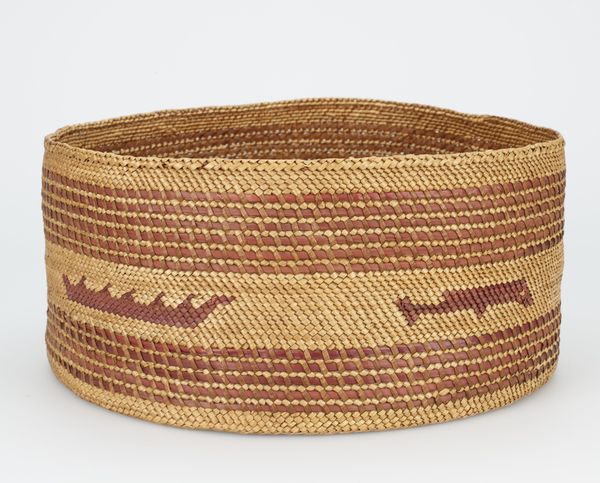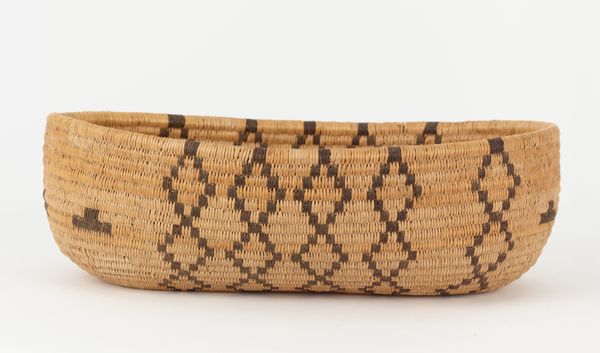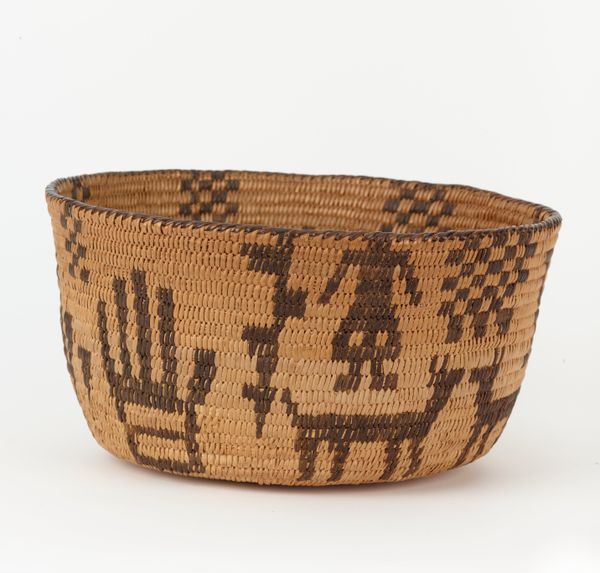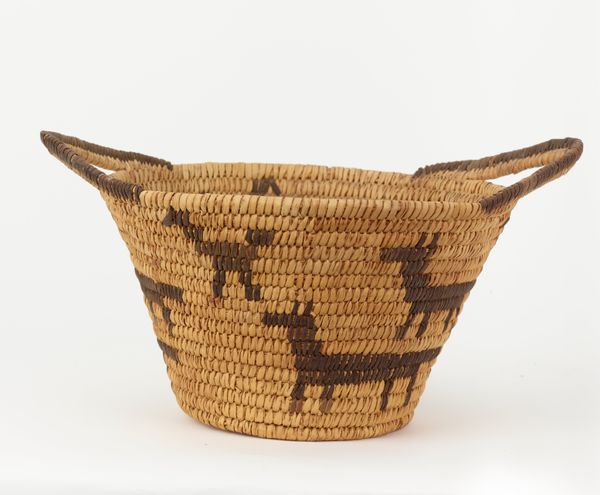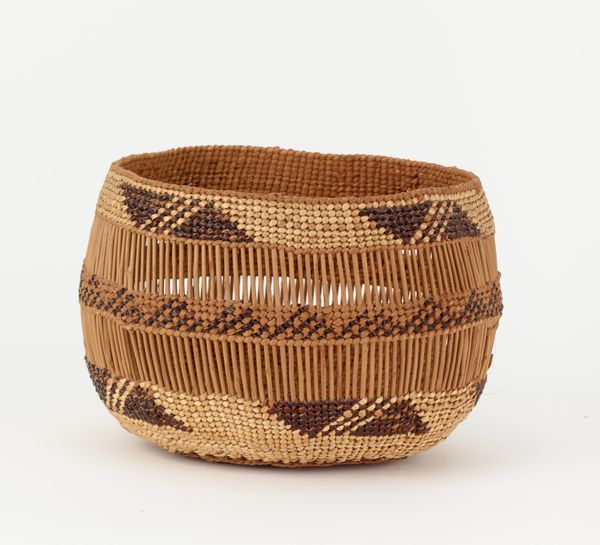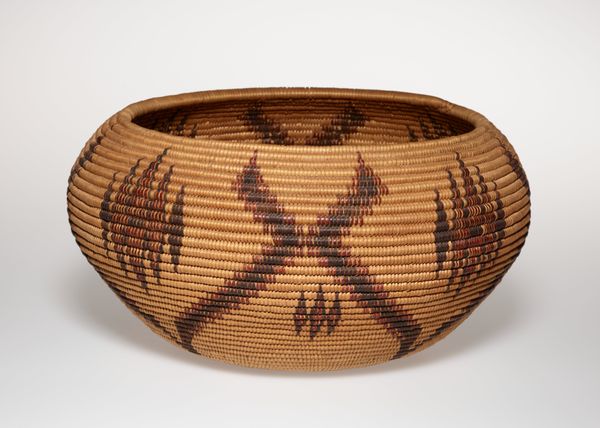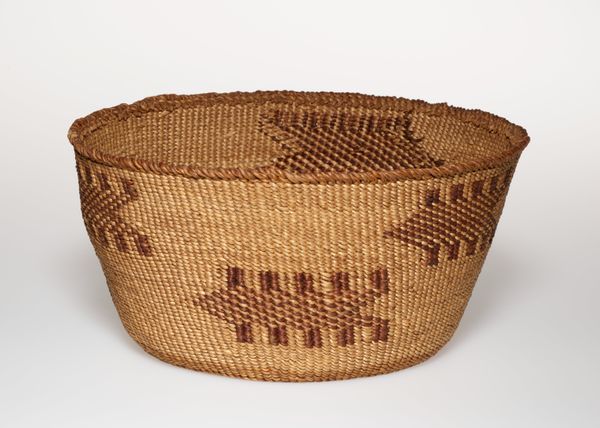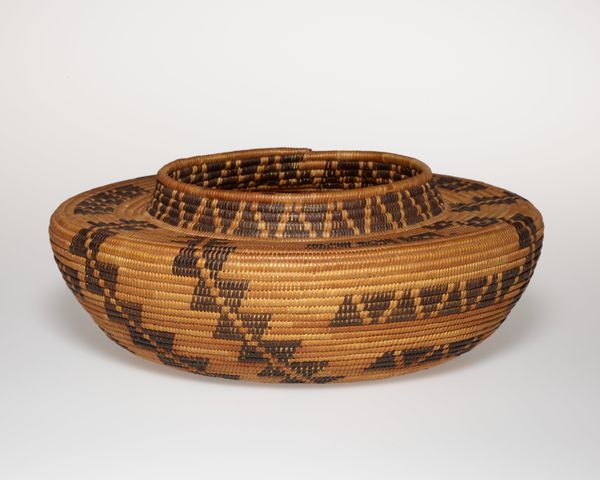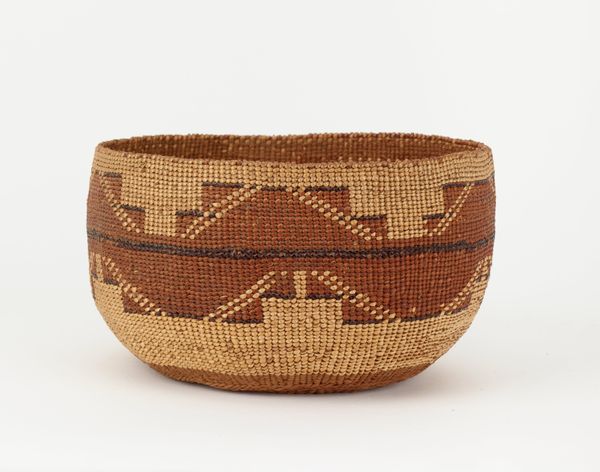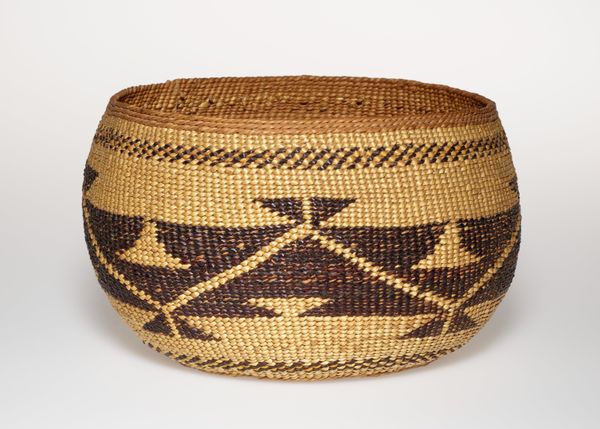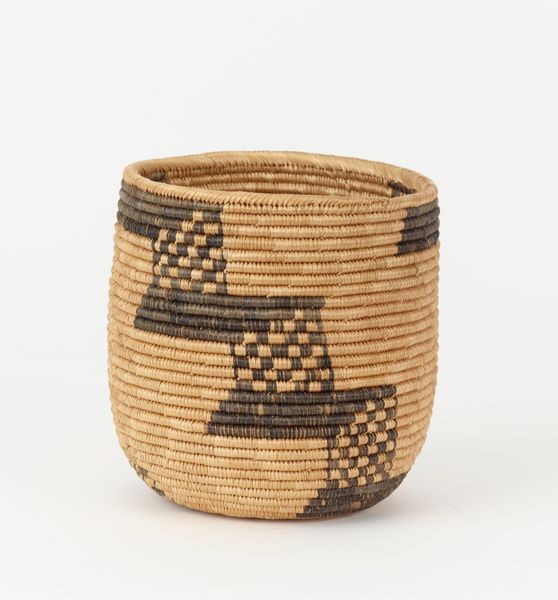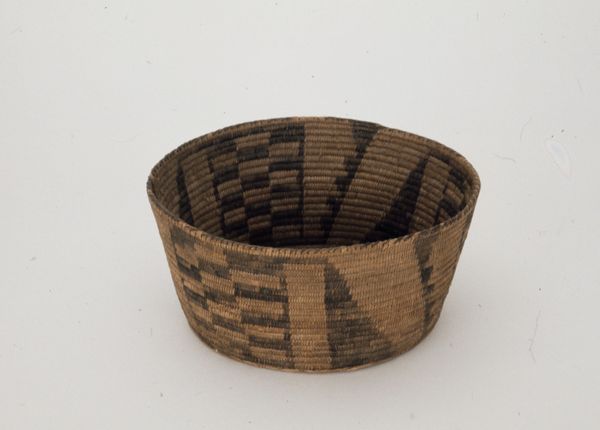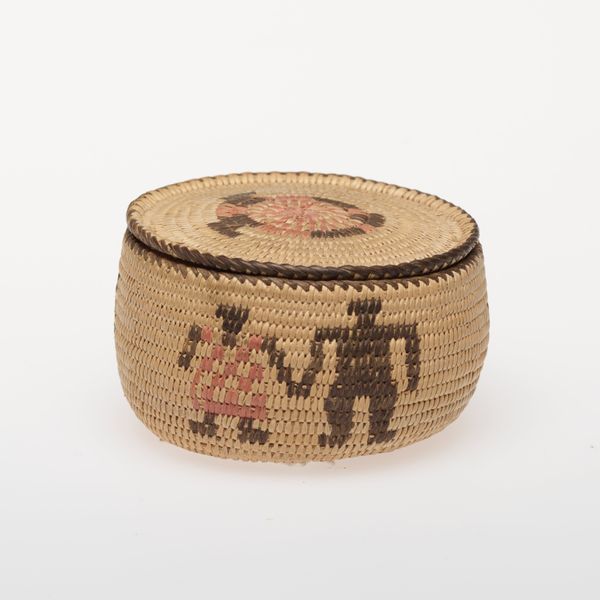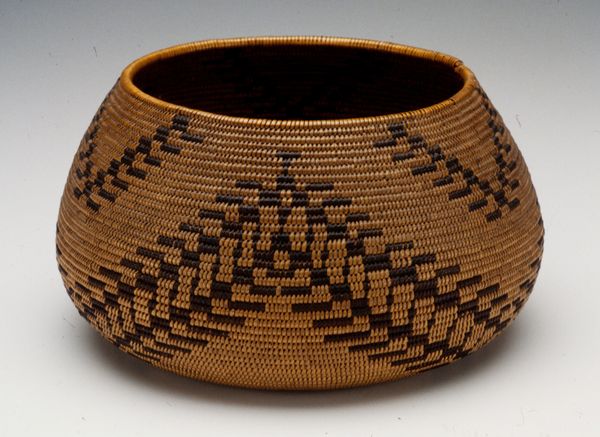
weaving, textile
#
weaving
#
textile
#
folk-art
#
geometric
#
indigenous-americas
Dimensions: 1 3/8 x 4 1/8 x 2 3/8 in. (3.5 x 10.5 x 6.0 cm)
Copyright: Public Domain
This miniature basket was crafted by the Tohono O'odham, or Papago, people. Its simple form is enlivened by the dark animal figures encircling its exterior. Notice how these abstracted animals parade around the basket. They may recall the ancestral connection to animals—perhaps dogs, or coyotes. The presence of animals in cultural artifacts is a potent symbol across time and space; in ancient Egypt, animals were divine figures, totems of power, and protection. These animals connect us to primal forces. They may reflect a deep, collective memory of humanity's relationship with the natural world, imbuing this simple basket with layers of cultural and psychological meaning. The animals convey a sense of movement. Such symbols are not static; they evolve. Like the ouroboros serpent that devours its tail—an ancient symbol of cyclicality—the animal motifs on this basket speak to the recurring nature of human experience and our constant reinvention of ancient archetypes.
Comments
minneapolisinstituteofart almost 2 years ago
⋮
In the early 1900s, many Euro-American women traveling through the Southwest region of the United States became infatuated with miniature Native American baskets, and some became avid collectors. Native women basket makers responded to this demand by creating ever-smaller baskets, utilizing the same harvesting, processing, and coiling techniques as those for personal use. Creating tightly woven, tiny baskets in an expanding range of designs and styles for their new clientele required the same levels of expertise and knowledge—but perhaps even more dexterity and skill.
Join the conversation
Join millions of artists and users on Artera today and experience the ultimate creative platform.
